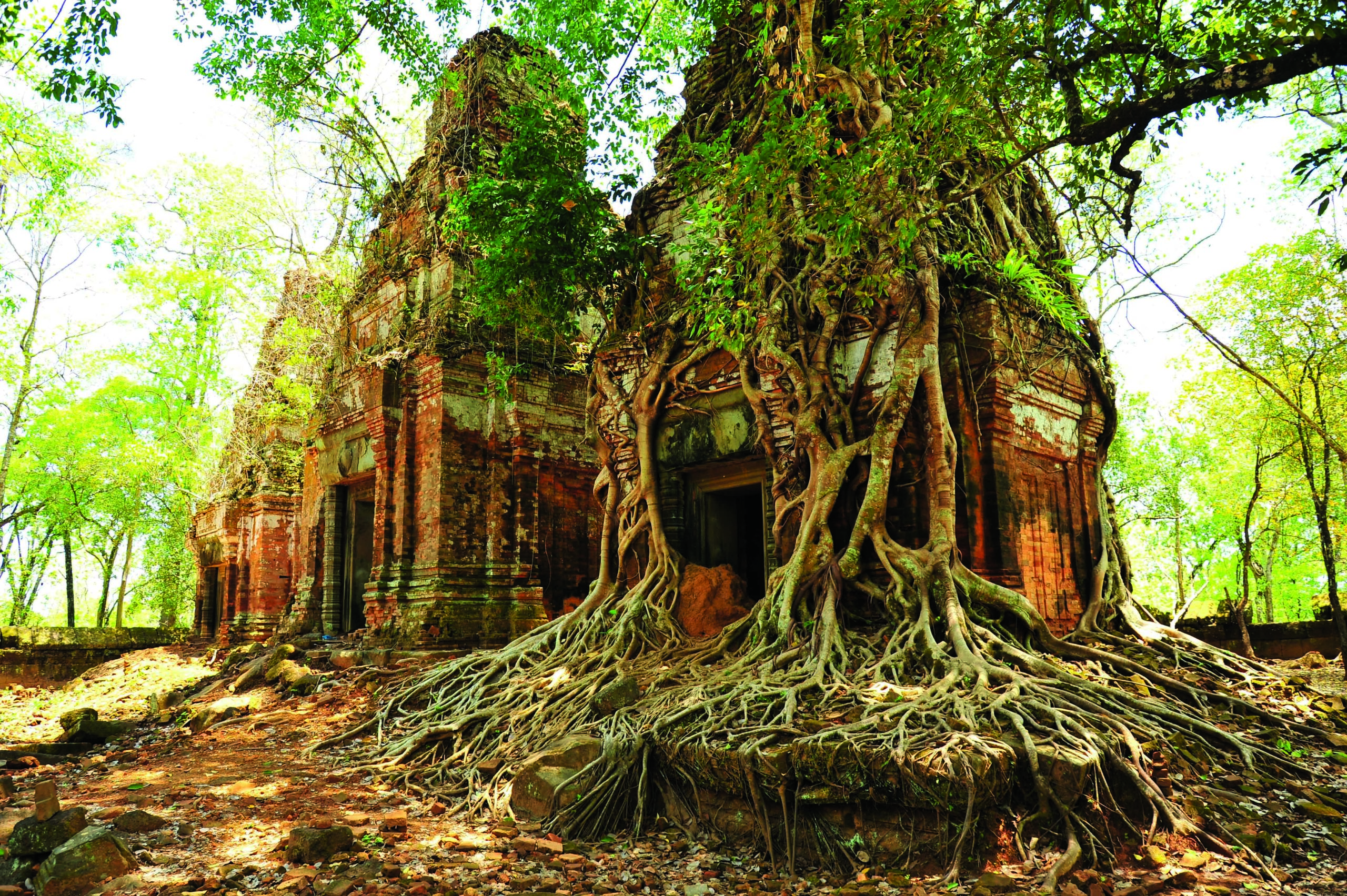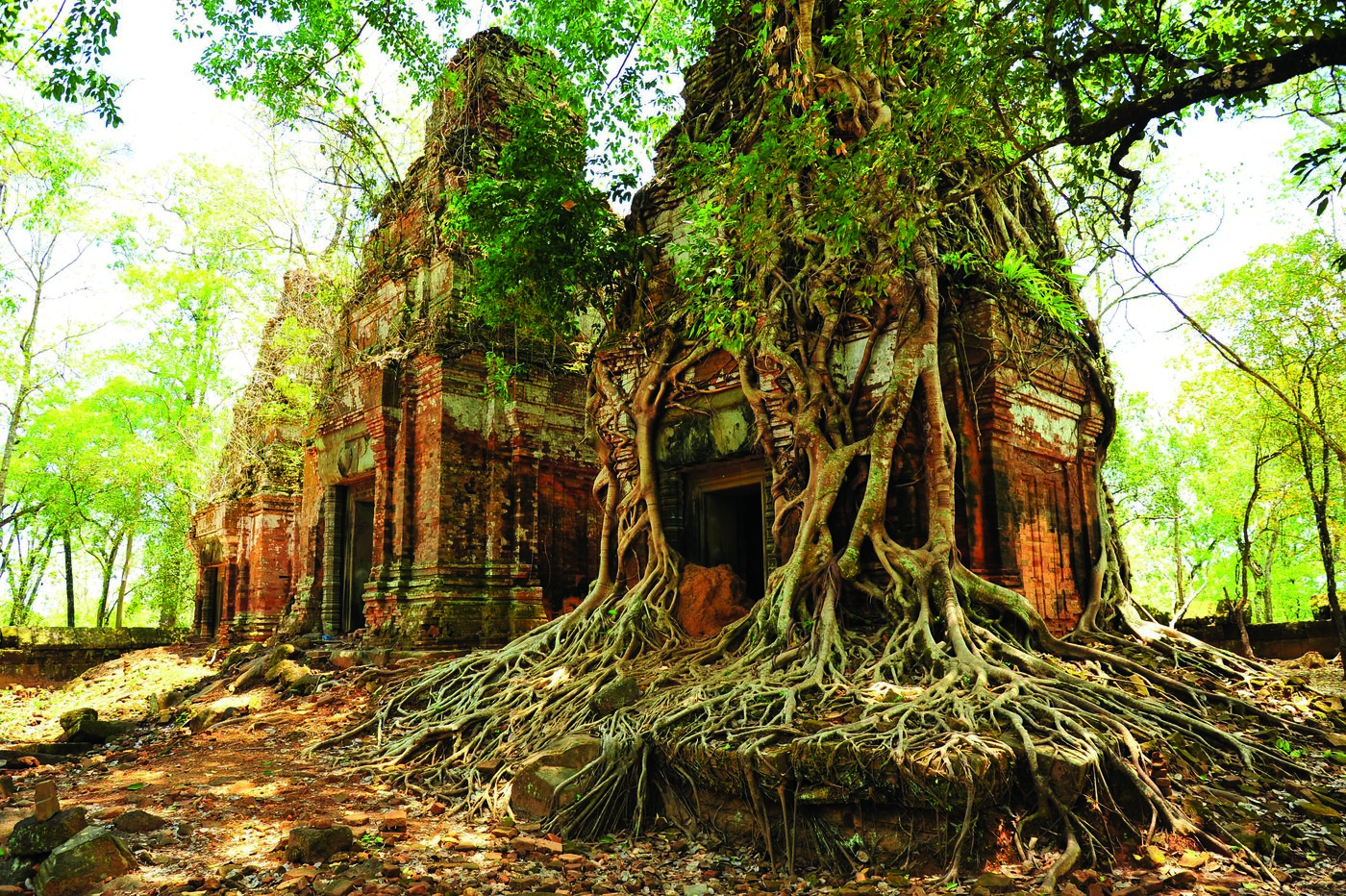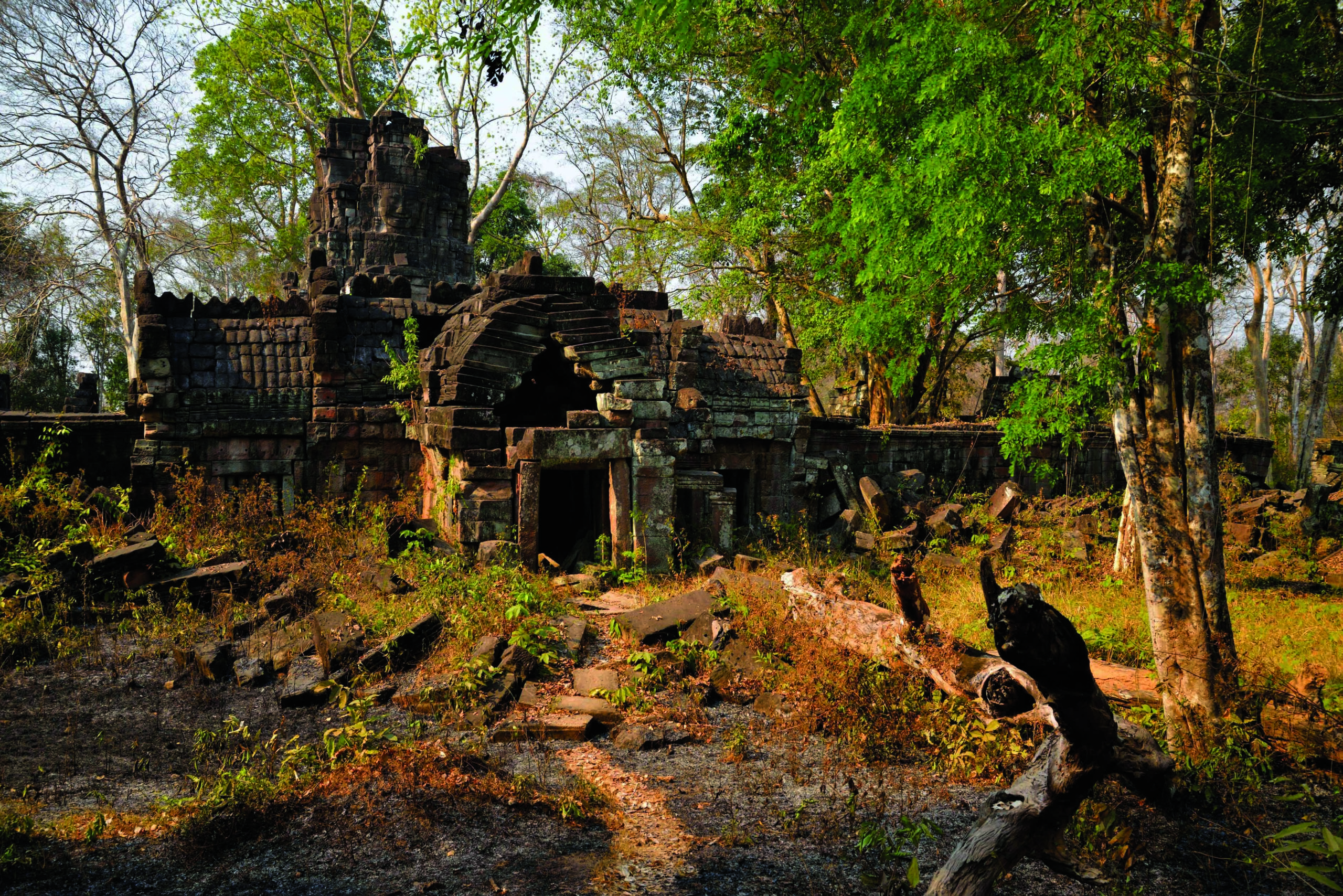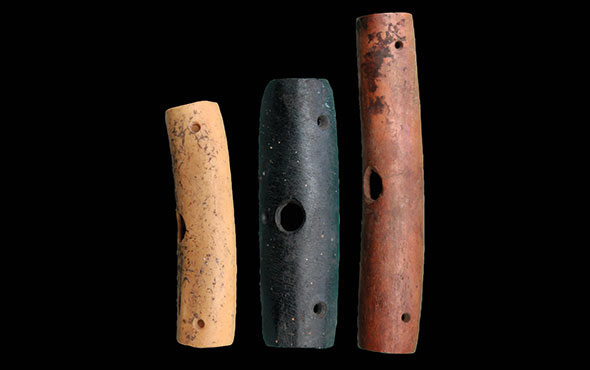
Although relatively short, the tenure of Jayavarman IV (reigned A.D. 928–941) as king of ancient Cambodia’s Khmer Empire (ninth to fifteenth century A.D.) was nonetheless eventful. One of the king’s key decisions was that henceforth the empire’s capital would be Koh Ker, 75 miles northeast of the previous—and future—capital at Angkor. In addition to nearly 80 temples, numerous palaces, an enormous pyramid, and miles of roads, Jayavarman IV built the largest reservoir in the empire’s history to burnish his reputation. While these highly ambitious works—which rivaled later projects at Angkor—might have secured Koh Ker’s place as the capital in perpetuity, researchers now believe that the reservoir’s failure may have been a cause of the capital’s downfall.
An international team has recently mapped a spillway and a 750-foot-long, 131-foot-wide, 13-foot-high chute created to discharge excess water from Koh Ker’s main reservoir. Managing runoff was especially important considering Cambodia’s monsoon climate and the area’s rolling topography. But the chute’s capacity was not sufficient to prevent water from overtopping one section of the reservoir’s embankment, which was then severely eroded by fast-flowing water. “The reservoir’s outlets were poorly designed and the spillway’s capacity for draining excess water from the reservoir was inadequate,” says engineer Terry Lustig, who collaborated with the project. “We think that it’s even possible that the system failed during the first rainy season after it was constructed.” This may have had important political implications. “Embarking on projects of civil engineering was central to establishing the legitimacy of some Khmer kings, and I am inclined to believe that the main purpose of the reservoir was to be a monument the king built for himself,” says Lustig. “It’s therefore not difficult to envisage that the failure of the water management system at Koh Ker may have had a significant impact on the prestige of the sovereign and contributed to the decision to reestablish Angkor as the empire’s capital.”














